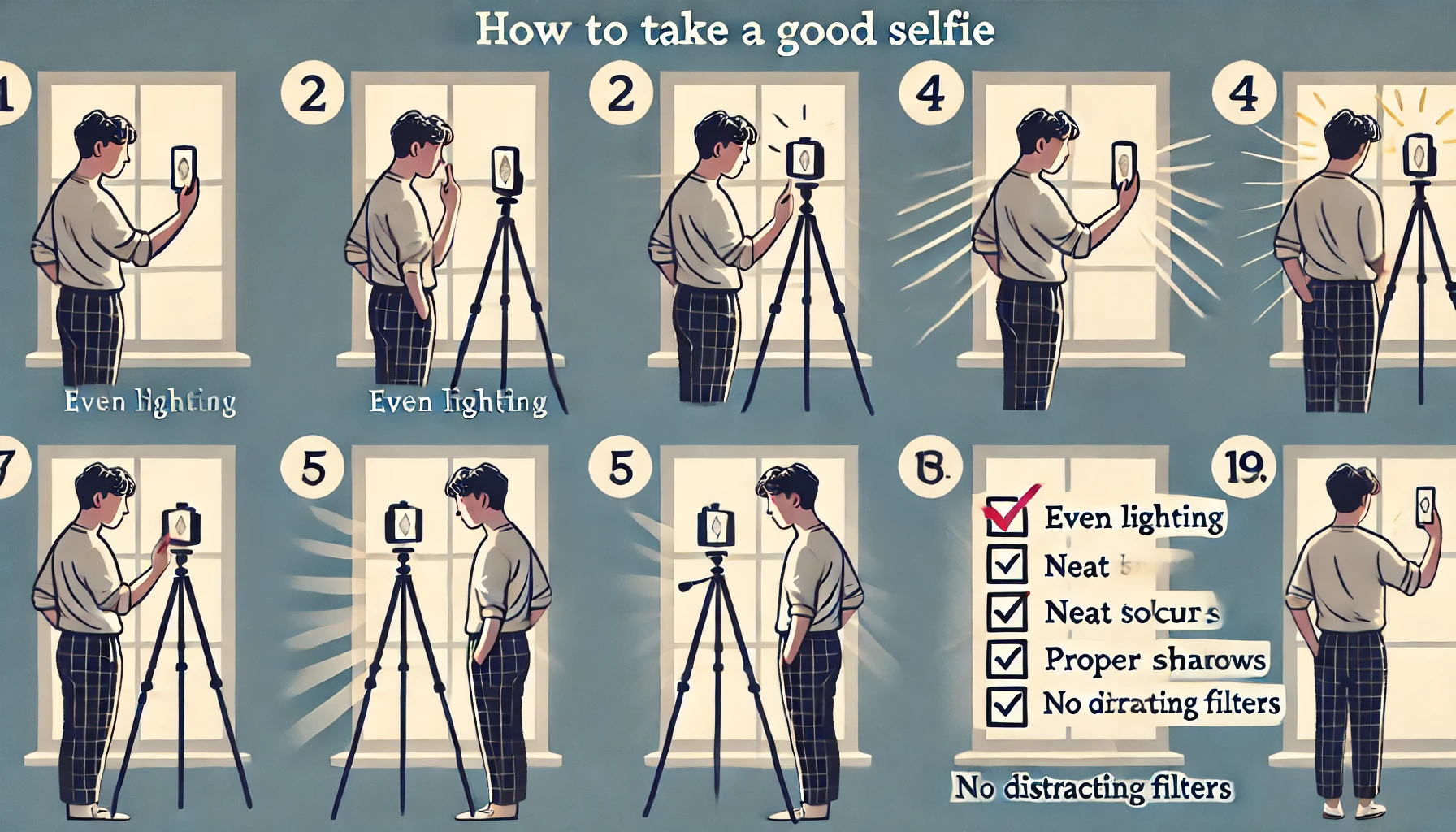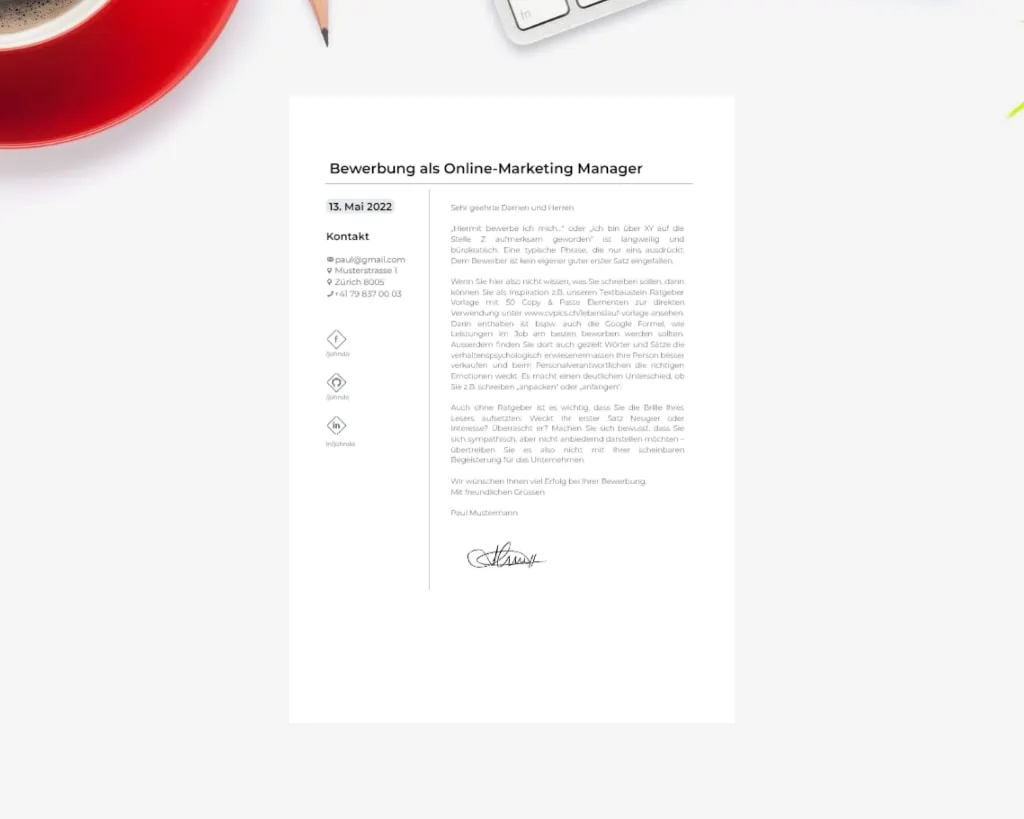Step 1: Light – How should I position myself to the light/window?
To take a good selfie, the right lighting is crucial. Natural light is ideal because it is soft and even. Position yourself in front of a window so that the light illuminates your face either frontally or slightly from the side. Avoid direct sunlight, as it can create harsh shadows and overexposure.
Step 2: How to position the phone to get the right frame
Position your phone at eye level to avoid distortions. Use a tripod or place your phone on a stable surface. Make sure the upper part of your torso and your face are well visible in the frame. Experiment with different angles to find the best composition.
Step 3: Self-Timer
Use the self-timer to avoid camera shake and to give yourself enough time to get into position. Most phones have a built-in self-timer that you can set in the camera app. Choose a delay of 3-10 seconds, depending on your needs.
Step 4: Check that the photos are well-lit – Checklist
Review your photo to ensure it is well-lit and clear. Here is a short checklist of what to look out for:
- Light: Is your face evenly lit without harsh shadows?
- Background: Is the background tidy and not distracting?
- Focus: Is your face sharp and not blurry?
- Framing: Is your face and the upper part of your torso well-visible in the frame?
- Camera settings: Are there no distracting filters or effects activated?
By following these steps and using a self-timer, you can take great selfies that clearly show your face and upper body without distortions.






